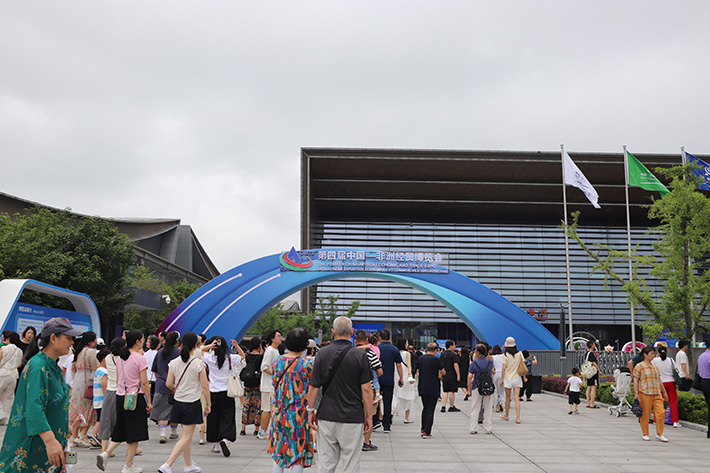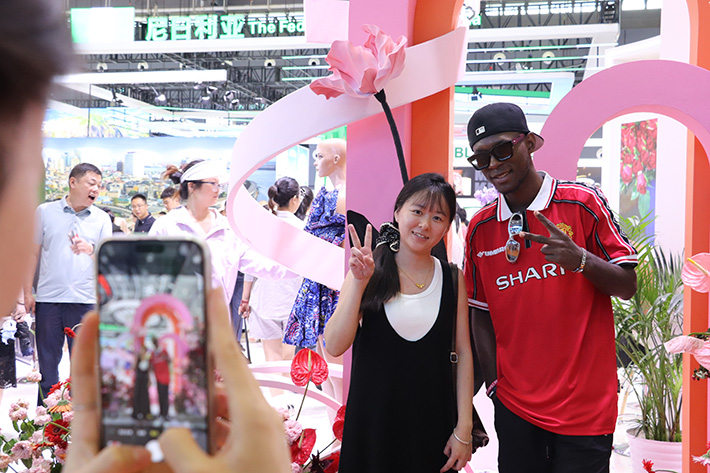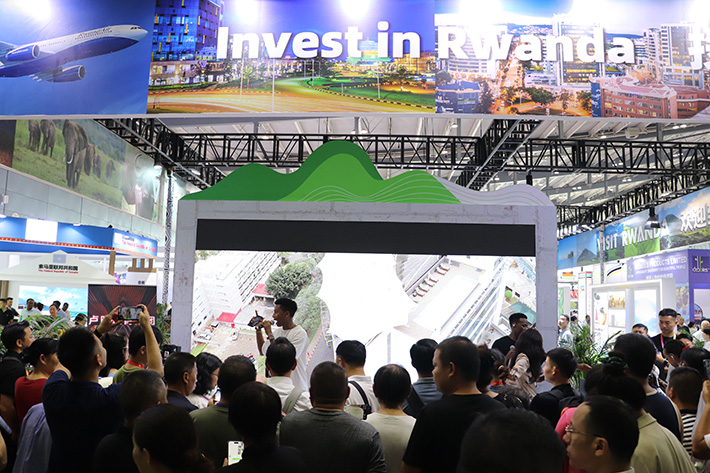More Than a Market


Towering banners, lively pavilions, and packed auditoriums transformed Changsha, Hunan Province, into a vibrant hub of cross-continental cooperation as it hosted the fourth China-Africa Economic and Trade Expo (CAETE). With a lively convergence of ideas, partnerships, and cultures, the city buzzed with energy.
This year’s event not only set new records, but also marked a meaningful shift in the trajectory of China-Africa relations.
CAETE designates countries of honour to highlight their strategic importance and deepen trade and economic ties during the expo. This year, Namibia was named a country of honour, reflecting its growing role in China-Africa cooperation.
Freddie Gaoseb, commercial counsellor at the Namibian embassy in Beijing and a member of the Namibian delegation, stressed the significance of CAETE in fostering economic cooperation. “Namibia has participated in all four editions of the expo,” he said. “We’ve already seen more of our products like beef and mutton entering the Chinese market, and we’re working on an agreement to export aquatic products as well.”
Held from 12 to 15 June, this year’s CAETE attracted representatives from 53 African countries, 11 international organisations, 27 Chinese provinces, autonomous regions and municipalities, and over 4,700 companies, institutions and business associations. More than 200,000 visitors packed the exhibition grounds, infusing the city with excitement and optimism.

Partnerships that deliver
Concrete outcomes were a hallmark of this year’s edition. A total of 176 agreements worth $11.39 billion were signed, representing a 45.8 percent increase in the number of projects and a 10.6 percent rise in total value compared to the previous expo in 2023. Additionally, 293 cooperation projects valued at $43.16 billion were announced, marking a fourfold increase in value. These initiatives, spanning digital infrastructure, agriculture, mining, and health care, reflect the growing breadth of China-Africa collaboration.
Over 30 thematic events examined the evolving partnership between China and Africa. Topics included industrial chain cooperation, green mining, infrastructure, traditional medicine, fashion, youth entrepreneurship, and clean energy. African nations took centre stage, with 14 countries hosting dedicated promotional sessions - the highest number in the expo’s history. Meanwhile, Chinese provincial regions such as Hubei, Inner Mongolia, Jiangxi, Anhui, and Chongqing organised tailored engagement programmes, signalling a fresh wave of locally driven cooperation.

Covering 100,000 square metres across six halls and one outdoor exhibition area, the expo showcased a vibrant mix of African crafts, jewellery, and agricultural products alongside advanced Chinese technologies designed for African markets, including off-grid solar systems, smart mining equipment, modular irrigation setups, and robotic emergency helicopters.
The inauguration of national pavilions for Zambia and Namibia in the CAETE Permanent Exhibition Hall, located in Changsha’s Yuhua District, a key satellite venue, signalled a deepening of trade integration. This brought the total number of African national pavilions in the hall to 32. Meanwhile, the construction machinery remanufacturing exhibition in Hunan’s Xiangtan City attracted over 12,000 visitors, including guests from 39 African countries and more than 150 exhibitors. Tentative orders reached a value of over 200 million yuan ($27.8 million).
The release of the Blue Book of China-Africa Economic and Trade Cooperation: Development Report (2025), alongside 27 other policy and research publications, added valuable intellectual depth to the event. The report highlights a profound transformation in China-Africa trade - moving away from a traditional resource-based model towards a more diversified, high value-added, and technology-intensive partnership.

Interplay of cultures
The expo has grown far beyond a mere platform for economic and trade cooperation. It is increasingly becoming a vibrant space where Chinese and African people connect, interact, and deepen mutual understanding.
Chinese visitors flooding the exhibition halls found themselves immersed in an atmosphere rich with African culture, as exhibitors competed for attention at their booths. Visitors stood in long queues to taste a unique ice cream made from fruits native to the Congo Basin, offered at the Republic of the Congo’s booth. At the Rwandan pavilion, crowds cheered not only for traditional Rwandan dances, but also for a young Rwandan band renowned for their singing of Chinese songs. With more than 8 million followers on Douyin, China’s leading short-video platform, the band exemplifies the growing cultural interplay between China and Africa.
In the fashion products hall, South African designer Thula Sindi was delighted to see African fashion winning fans in China. Founder of Africa Rise, a retail concept store launched in 2019 featuring designers from across the continent, Sindi partnered with Development Reimagined to present a curated selection of African fashion at the expo. Initially aiming to test Chinese consumer interest, he was pleasantly surprised when 22 items sold within the first two days.
“People are not only excited about what we create, but it confirms something I’ve always felt: Customers here are seeking something different, new, and unique,” he told ChinAfrica.
He added that while designer fashion targets a niche audience, China’s large population and long-standing appreciation for art and design make it a market with great potential. He plans to open a shop in Shanghai, a leading city in fashion, to explore this further.
At the CAETE Permanent Exhibition Hall, Chinese entrepreneurs are finding new ways to combine Chinese and African strengths. One notable example is a cassava-based rice alternative created by Longzaitian, a food company from Hunan. Fresh cassava imported from Africa is crushed, dried, and turned into rice-like grains. Served at the Nigerian pavilion, the product surprised visitors with its taste and texture, which closely resembled real rice.
Longzaitian Chairman Liu Changxun said the innovation solves a major problem - cassava’s short shelf life caused by its high moisture content. Cassava rice, rich in vitamins and naturally gluten-free, responds to China’s growing interest in healthier, alternative staples. The company plans to set up processing plants in Africa to localise production and build a complete industrial chain.
At the Kenyan pavilion, tea was the main highlight. Lieguzi, a Hunan-based company focused on tea and coffee, showcased a variety of products sourced from Kenya and Rwanda. Its local processing facilities allow the company to export fully finished goods to China.
Lieguzi’s tea products have been a crowd-puller at CAETE. At the 2023 edition of the expo, the company received orders worth over 20 million yuan ($2.8 million), selling out its entire stock, including samples.
Wang Mingjie, a sales manager at Lieguzi, attributed their success to the unique combination of Chinese expertise and African terroir. “Tea varieties we know in China take on a distinctive flavour when grown on African soil and processed using Chinese techniques,” he told ChinAfrica. “It is this fusion of Chinese and African elements that makes our products stand out.”


